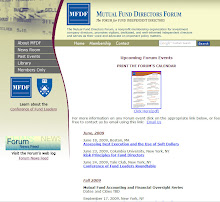When dealing with their fund's audit firm, directors and trustees serving on the board's audit committee may find it useful to familiarize themselves with the PCAOB's Auditing Standard No. 3 on audit documentation. Knowing the general requirements for documentation imposed on auditors can help audit committee members, particularly newer directors, better communicate with their auditors and help them understand the way the auditors will memorialize the planning and performance of their work, the procedures performed, evidence obtained, and how and when they will document their conclusions.
Among other things, PCAOB No. 3 sets out how significant findings or issues will be documented by auditors. "Significant findings or issues" include a list of things high on an effective audit committee's radar screens during an audit:
The full text of Auditing Standard No. 3 is available at: http://www.pcaobus.org/Rules/Rules_of_the_Board/Auditing_Standard_3.pdf
The text of conforming amendments to Auditing Standard No. 3 is available at: http://www.pcaobus.org/Rules/Rules_of_the_Board/Conforming_Amendments_AS5.pdf
Among other things, PCAOB No. 3 sets out how significant findings or issues will be documented by auditors. "Significant findings or issues" include a list of things high on an effective audit committee's radar screens during an audit:
- Complex or unusual transactions involving assumptions and estimates.
- Results of auditing procedures that indicate a need for significant modification of planned auditing procedures, the existence of material misstatements, omissions in the financial statements, the existence of significant deficiencies, or material weaknesses in internal control over financial reporting.
- Audit adjustments.
- Disagreements among members of the engagement team or with others consulted on the engagement about final conclusions reached on significant accounting or auditing matters.
- Circumstances that cause significant difficulty in applying auditing procedures.
- Significant changes in the assessed level of audit risk for particular audit areas and the auditor's response to those changes.
- Any matters that could result in modification of the auditor's report.
The full text of Auditing Standard No. 3 is available at: http://www.pcaobus.org/Rules/Rules_of_the_Board/Auditing_Standard_3.pdf
The text of conforming amendments to Auditing Standard No. 3 is available at: http://www.pcaobus.org/Rules/Rules_of_the_Board/Conforming_Amendments_AS5.pdf





